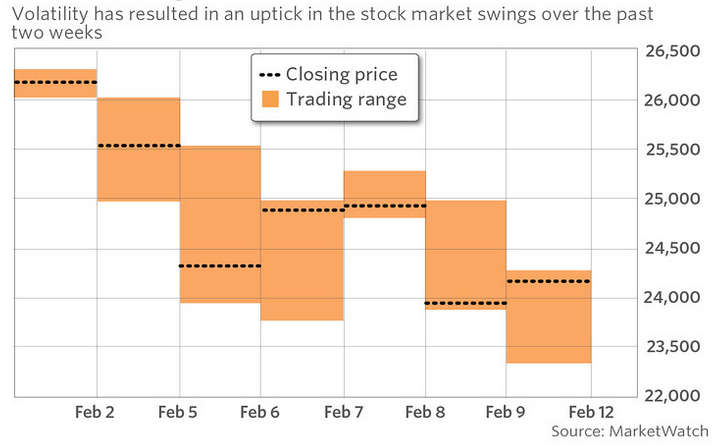Stock Market’s Wild Swings: It’s a ‘Trader’s Paradise’, Says Wall Street Legend
Wall Street traders are riding high amid increased volatility.
Not everyone is yanking their hair out after a resurgence of once-dormant volatility.
For one traders, whose lifeblood is unearthing profit from the vagaries of asset prices on Wall Street, view the recent shift to a decidedly bumpier ride for stocks as a downright happy-making event.
Prominent trader Mark Fisher told CNBC on Monday that the wild gyrations, which have become the norm represented a “a trader’s paradise,” over the “last couple of days.”
“I think that volatility is here to stay for a while, and that presents lot of really good short-term” opportunity, Fisher said during CNBC’s Fast Money Halftime Report show.
Fisher, once one of the youngest traders on the Comex, has worked with some of the investment world’s legends including Paul Tudor Jones.
“Short term around the openings and the closings of the stock market there have been a lot of stuff to take advantage of,” he said.
Fisher’s comments come after the Dow Jones Industrial Average DJIA the S&P 500 SPX and the Nasdaq Composite Index COMP posted their worst weekly declines in about two years, marked by a resurgence of volatility, after a pair of exchange-traded products used to bet against rising measures of volatility imploded, with a historic rise of the Cboe Volatility Index VIX a key gauge of Wall Street volatility and consternation.

Last week, the so-called VIX, which reflects bearish and bullish options on the S&P 500, 30 days in the future, logged its highest percentage rise in history (the gauge typically moves in the opposite direction of equity benchmarks) as a period of quiescence on Wall Street shattered, with the Dow notching its largest point decline in its 121-year history.
Fisher isn’t the only trader who thinks that the recent pivot for VIX, which sits at 27, above its historic average of 20, is a boon for traders.
Michael Antonelli, equity sales trader at Baird, said that his phone has been ringing off the phone nonstop lately.
“It is the kind of times when being a human trader is really kind of fun,” he said. “This has been a return to the days of the European financial crisis and the great financial crisis when you were kind of giddy and shaking with anticipation because so much could happen…and you are getting blitzed every day.”
Part of the return to volatility has been attributed to the short-volatility products, which allowed investors to bet that measures of volatility would continue to fall, while they used the proceeds from such bets to buy assets during market dips, perpetuating a cycle of serenity.
However, those bets, often involving leverage, have been unwinding over the past several sessions, with investors selling liquid assets indiscriminately to meet calls from lenders to place more collateral against their bearish bets. The violent moves lower also helped to accelerate that unwind, market participants said.
Joe Saluzzi, co-head of Equity Trading at Themis Trading, said this market environment might be ideal for financial firms attempting to facilitate traders for clients because of the frequent wild swings in the benchmarks.
“When you have these types of days, [traders] can actually spot what they call ‘quality buys’,” said Saluzzi, referring to investors buying stocks they like but were deemed too expensive.
“It’s very hard to pick a stock when they are all up,” he said.
To be sure, it isn’t clear if the market has truly put in a bottom. Although there have been no apparent catalysts for the recent eruption in activity, earnings remain solid and the outlook for the economy appears healthy, a debate rages about whether the move lower is short-term or more lasting.
A more sustained downturn might suggests too much volatility and pain even for the most seasoned traders.
Article and media originally published by Mark DeCambre at marketwatch.com